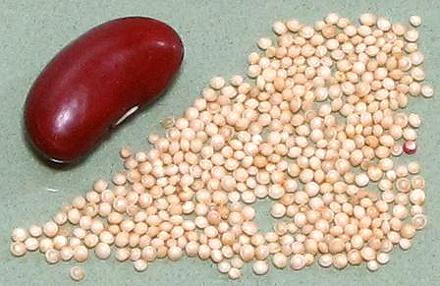 [Kiwicha (Inca); Amaranthus cruentis, A. hypochondriaca,
A. caudatus | India Amaranthus viridis]
[Kiwicha (Inca); Amaranthus cruentis, A. hypochondriaca,
A. caudatus | India Amaranthus viridis]
There are at least 70 species of Amaranth, and some of them produce seeds of sufficient size and quantity to be harvested and used similarly to grains. These seeds are eaten in various parts of the world, and are seeing a resurgence in the Americas after Spanish suppression. Listed above are species most noted for producing edible seeds, which are very similar to Quinoa seeds. For Greens, see our Amaranth Greens page.
The most important seed amaranths are native to the American tropics, but are now grown worldwide. Amaranth was of great importance to the Incas because it grew well in the high mountainous regions of Peru and was highly nutritious. It has more recently become of some importance in the Himalayan region of Asia for similar reasons.
Spanish conquerors of Peru were very disturbed by amaranths use in a ritual too close to Christian communion for comfort, and banned its cultivation. The crop has recently gone back into production because of its nutritional attributes, and it is now widely available. It is slowly escaping from the "health food" market into the mainstream, though not as quickly as Quinoa.
More on Amaranth Family.